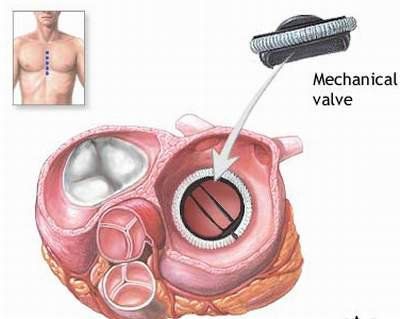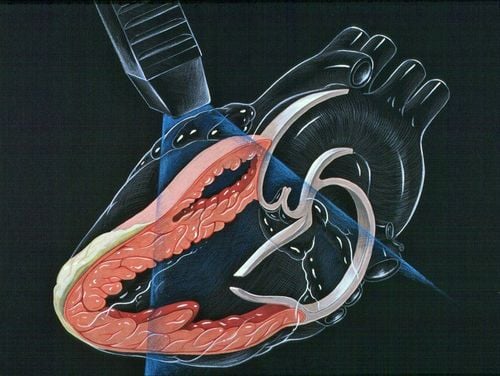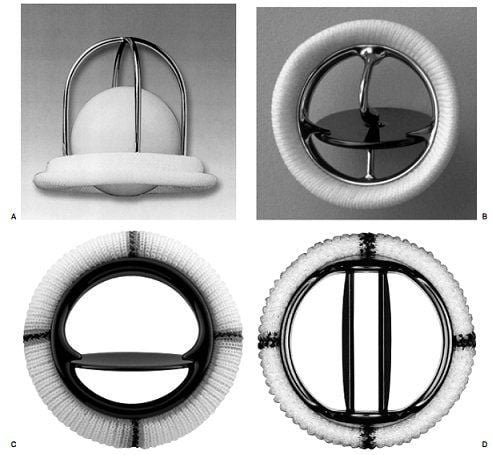This is an automatically translated article.
The article is professionally consulted by Master, Doctor Do Xuan Chien - Head of Department of Medical Examination & Internal Medicine and Professional Advisor, Department of Medical Examination and Internal Medicine - Vinmec Ha Long International Hospital.Infective endocarditis is an infection of the endocardium. This is a fairly common disease, especially in people with cardiovascular disease or having cardiovascular intervention. Although the treatment is cured, it can later leave complications of heart valve damage leading to heart failure.
1. What is infective endocarditis?
Infective endocarditis is an infection of the endocardium (endocardium - the inner lining of the heart) often accompanied by ulcerative lesions and warts. The disease usually occurs on an endocardium with congenital or acquired damage such as valvular disease, artificial heart valves, etc.
2. Causes of infective endocarditis
The cause of infective endocarditis is bacteria from other parts of the body traveling to the heart to cause disease. These bacteria include:
Streptococcus is the main cause of staphylococcal disease, which is common after abortion, often in the tricuspid valve. Meningococcal, pneumococcal, gonococcal. Klebsiella pneumoniae, Salmonella Actynomyces fungi, Candida: seen in immunocompromised people

Liên cầu là nguyên nhân chính gây ra bệnh viêm nội tâm mạc nhiễm khuẩn
3. Symptoms of infective endocarditis
Clinical symptoms of the disease include:
Prolonged fever in 1 patient with heart disease. Patients with comorbid heart disease who have persistent fever for more than 1 week without finding other causes should undergo blood cultures for appropriate and effective antibiotic therapy. Then an echocardiogram should be indicated. Anemia: Pale skin, pale mucous membranes, reduced hemoglobin in the blood count. On examination, a new heart murmur can also be detected. Other symptoms: loss of appetite, fatigue, chills, night sweats, headache, joint pain and small bleeding on the chest, toes, back, fingers. Subclinical symptoms:
Echocardiography: New appearance of lesions such as warts, ulcers, abscesses, broken valves or valve structures, regurgitation may appear. In addition, broken ligaments, muscle columns or perforation of heart walls are also detected. Blood culture for pathogenic bacteria: blood culture several times before giving antibiotics, culture during fever. Blood culture for the purpose of finding pathogenic bacteria for effective antibiotic treatment Other blood tests: elevated erythrocyte sedimentation rate, red blood cell count usually slightly decreased, white blood cell count moderately increased, especially white blood cell neutral multiplier.

Người bệnh mệt mỏi và xanh xao do thiếu máu
4. Treatment of infective endocarditis
Treatment for endocarditis includes antibiotics and, in severe cases, surgery.
4.1 Principles of treatment Early antibiotic treatment (immediately after 3 blood cultures) with the aim is to kill bacteria in wart lesions even if the results of antibiogram are not available. Consider anticoagulation Consider surgical intervention Specific prevention
The choice of antibiotic requires antibiotic with bactericidal effect, high dose, combination of two antibiotics, intravenous administration, antibiotic duration from 4 -6 weeks. Once the results of the antibiogram are available, the antibiogram should be replaced. Monitor liver and kidney function If blood culture results have been obtained, combine antibiotic therapy according to the results of the antibiogram. Empiric antibiotic therapy when blood culture results are not available. Surgery. Indicated in cases of heart valve infections, fungi, persistent infections or replacement of damaged valves. Depending on the condition, your doctor may recommend either repairing the damaged valve or replacing it with an artificial valve made of animal tissue or other artificial materials.

Bệnh nhân có thể được chỉ định phẫu thuật thay van tim tùy tình hình sức khỏe
5. Antibiotics to prevent infective endocarditis
Infectious endocarditis often occurs in cases of cardiovascular disease, so to prevent infective endocarditis, it is necessary to use prophylactic antibiotics in the following cases:
Artificial valve (birth valve) medical, mechanical valves,) History of infective endocarditis Cyanotic congenital heart disease: unoperative or provisional surgery Pulmonary aortic shunt Heart valve disease: aortic regurgitation, mitral regurgitation , aortic stenosis Mitral valve prolapse with regurgitation and thickening of the mitral aortic valve Unsurgical cyanotic congenital heart disease (except atrial septal defect) Obstructive cardiomyopathy Complicated transplant of heart problem People with these problems may need to take prophylactic antibiotics before certain medical or dental procedures to prevent endocarditis.
Vinmec International General Hospital is one of the hospitals that not only ensures professional quality with a team of leading medical professionals, modern equipment and technology, but also stands out for its examination and consultation services. comprehensive and professional medical consultation and treatment; civilized, polite, safe and sterile medical examination and treatment space. Customers when choosing to perform tests here can be completely assured of the accuracy of test results.
Master. Doctor Do Xuan Chien is former Deputy Head of Cardiology Department of Phu Tho Provincial General Hospital with more than 11 years of experience working in Cardiology and Metabolic Pathology. Currently, he is the Head of the Department of Medical Examination and Internal Medicine, Vinmec Ha Long International General Hospital.
Associate Professor. Dr. Hoang Dang Mich has over 42 years of medical career, has strengths in the specialized fields of Liver - Kidney - Immune pathology... Currently, he is a Specialist Consultant of General Internal Medicine Department of Examination. Medicine & Internal Medicine, Vinmec Ha Long International General Hospital.
Customers can directly go to Vinmec Health system nationwide to visit or contact the hotline here for support.














